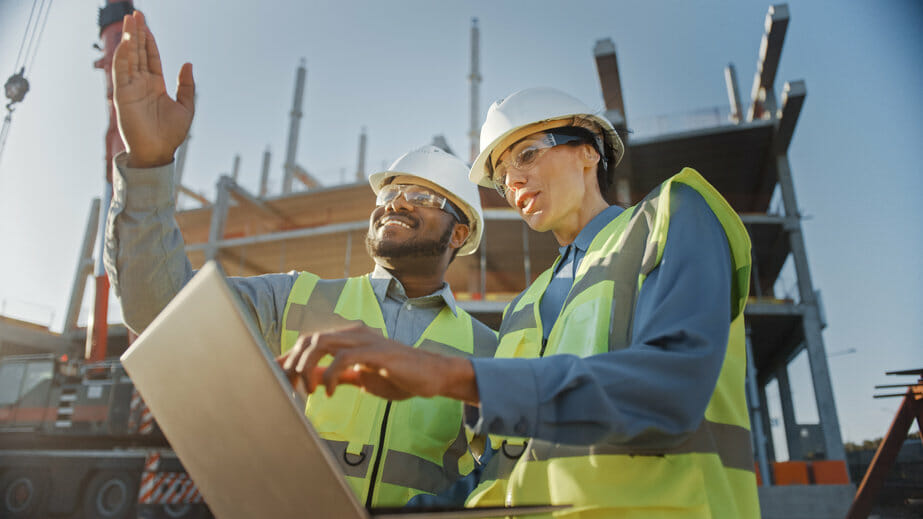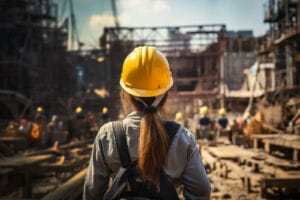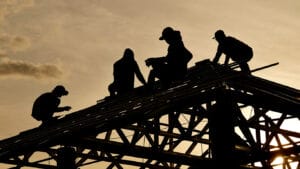Every day, millions of individuals are affected by noise pollution, which is an unseen threat. Noise pollution can take numerous forms, from loud music events to motorway traffic. Construction-related noise pollution is one of these types, and it can cause a variety of problems, including increased blood pressure in adults and disruption of local wildlife’s patterns.
Although noise pollution is a serious issue on building sites, there are several strategies to limit the amount of noise produced. Workers might, for example, verify that they select proper construction equipment for the job and that all equipment is operational before usage. Read on to find out the best ways to protect construction workers from loud noises.
Noise barriers
Noise barriers block the direct path of the sound waves, from the source of noise to the recipient, protecting workers and the community from noise exposure. They do not eliminate noise, but they help to reduce its level, enclosing the source of sound within sound-absorbing materials like mineral wool. A few examples of machinery you may want to add noise barriers for include saws and jackhammers.
There are special industrial sound barriers that can protect anyone working on a construction site from any type of noise pollution including loud machinery noises. This sort of noise suppression is utilized indoors and outdoors when a roofed sound containment system is impractical or impracticable. Typically made up of modular steel panels and structural steel columns, for many industrial noise control equipment applications a sound barrier wall is an appropriate solution.
Personal hearing protection
Provide hearing protection to your employees to diminish the impacts of excessive noise. There are various methods for determining the intensity of noise on a construction site. One alternative is to use an app to determine how noisy particular pieces of equipment and parts of the work zone are. Earmuffs, earplugs, and canal caps are the three fundamental types of hearing protection to consider.
If people need to work on an especially loud construction site, they can protect their ears with both earmuffs and earplugs for greater security. Protecting your ears from noise pollution is very important as noise pollution is a danger that not many are aware of, but it can irreversibly damage your hearing. So whenever working in a loud area, make sure to protect your ears as best as you can.
Select quieter equipment
There’s no avoiding the reality that construction equipment can be noisy, but there are ways to select equipment that is quieter. Electronically-powered machinery is, on average, quieter than diesel-powered machinery. Hydraulically-powered gear is also quieter than pneumatically-driven equipment. It’s worth noting that quieter machinery or processes can be more expensive.
This is due to stricter manufacturing tolerances, stronger gear mesh, and the use of quieter cooling fans. There are a few improvements to consider if you want to minimize the noise levels of the current equipment. To avoid additional noise while also protecting the construction workers from danger, make sure bolts are tightened, parts are well greased, and equipment is checked for wear and tear.
Reduce noise during the design process
Considering noise throughout the project design process is one of the best techniques to limit noise exposure. This can be accomplished by selecting noise-reducing technology and avoiding design defects that can magnify noise. To reduce noise, cover anything metal, such as tables, wheels, or other metal objects, with rubber before beginning the construction operation.
Maintain and adapt your machinery to eliminate unnecessary rattling or ringing, and cover any items with a noise-generating capacity with an elastic material to minimize mechanical shock and noise. Ensure machine rotational speeds do not coincide with the resonance frequencies of the supporting structure to reduce noise caused by the vibration of beams and plates.
Final thoughts
Any sort of sound that impairs the health and well-being of wildlife and humans is referred to as “noise pollution” and we use decibels to assess its severity. Excessive noise is generally defined as anything that causes or exceeds 85 dB of sound over 8 hours. At this level of sound exposure, OSHA recommends that personnel use hearing protection devices to protect themselves from the negative impacts of noise pollution.
Noise from building projects can be harmful to people and the environment in addition to being a nuisance. That’s why every construction worker should have access to noise-reducing equipment that will protect their hearing and keep them fully safe in their workplace. With that being said, their employers are obliged to give them the safety equipment they need and keep their workers safe.




